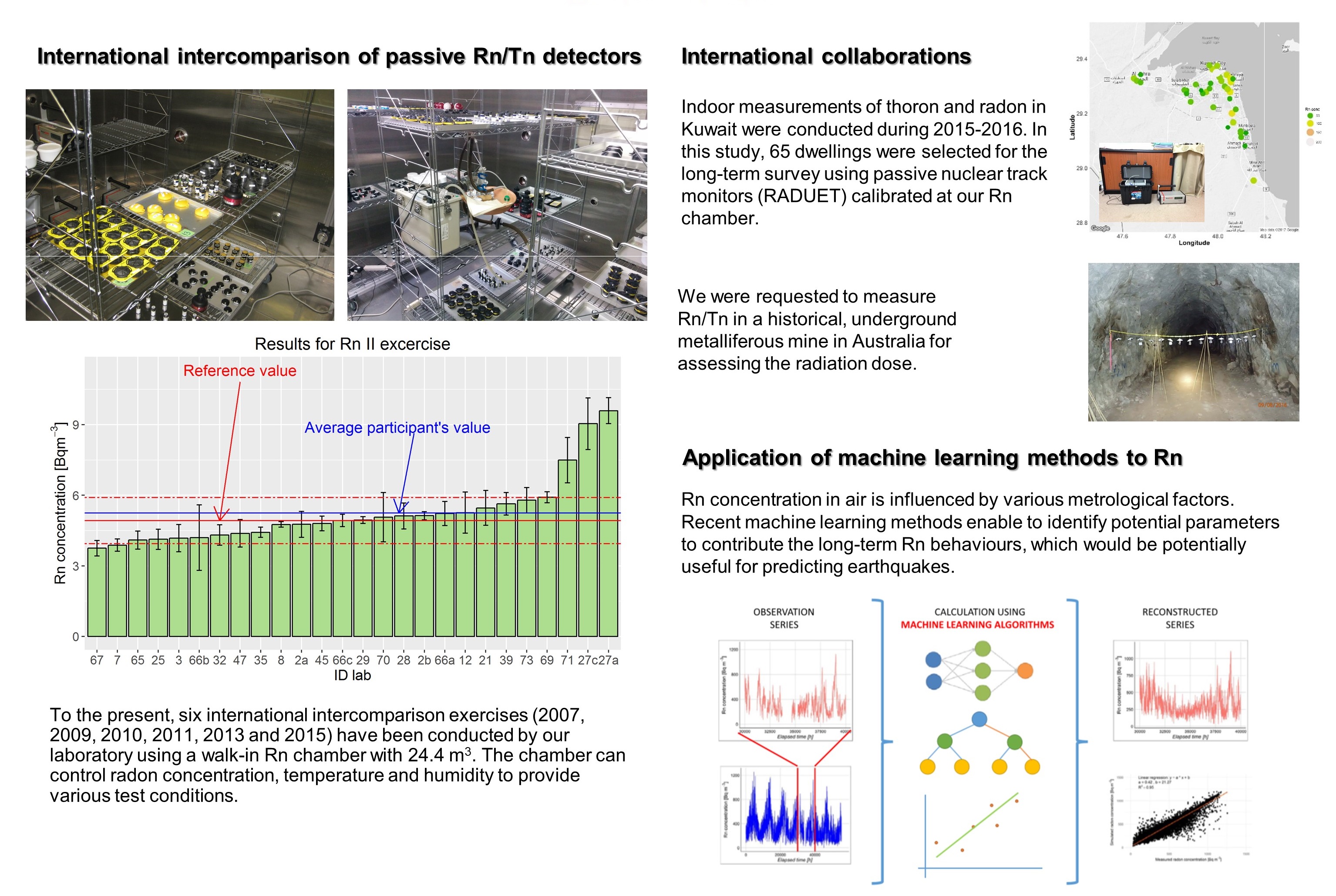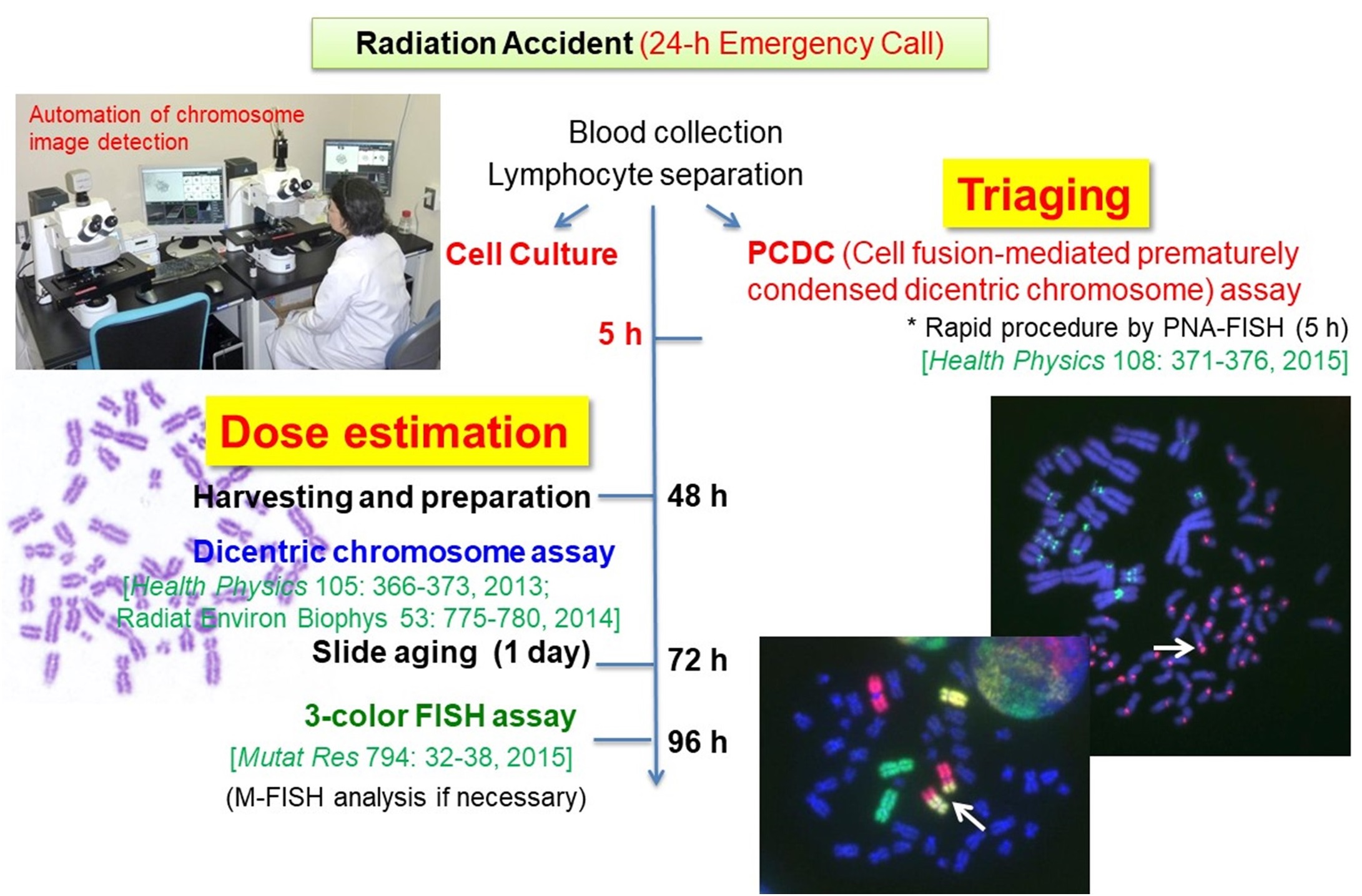Department of radiation measurement and dose assessment has been formed from the current medium-term research plan period (2016~). The mission of the department is to initiate basic and applied researches on radiation measurement and dosimetry as the basis for wide areas of radiation-related research and development in QST. The department consists of the following three research groups:
(List of Major Original Papers)
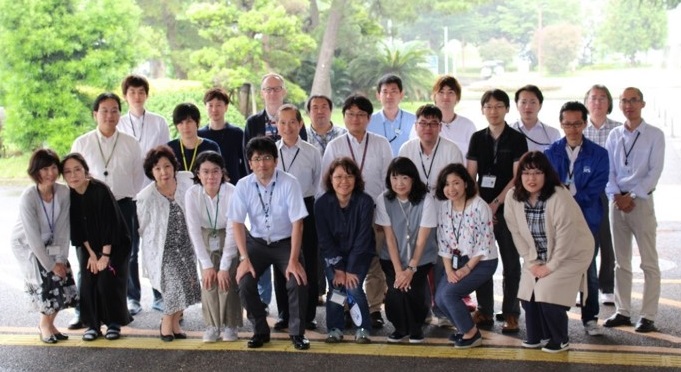
Radiation dosimetry with advanced nuclear track detection
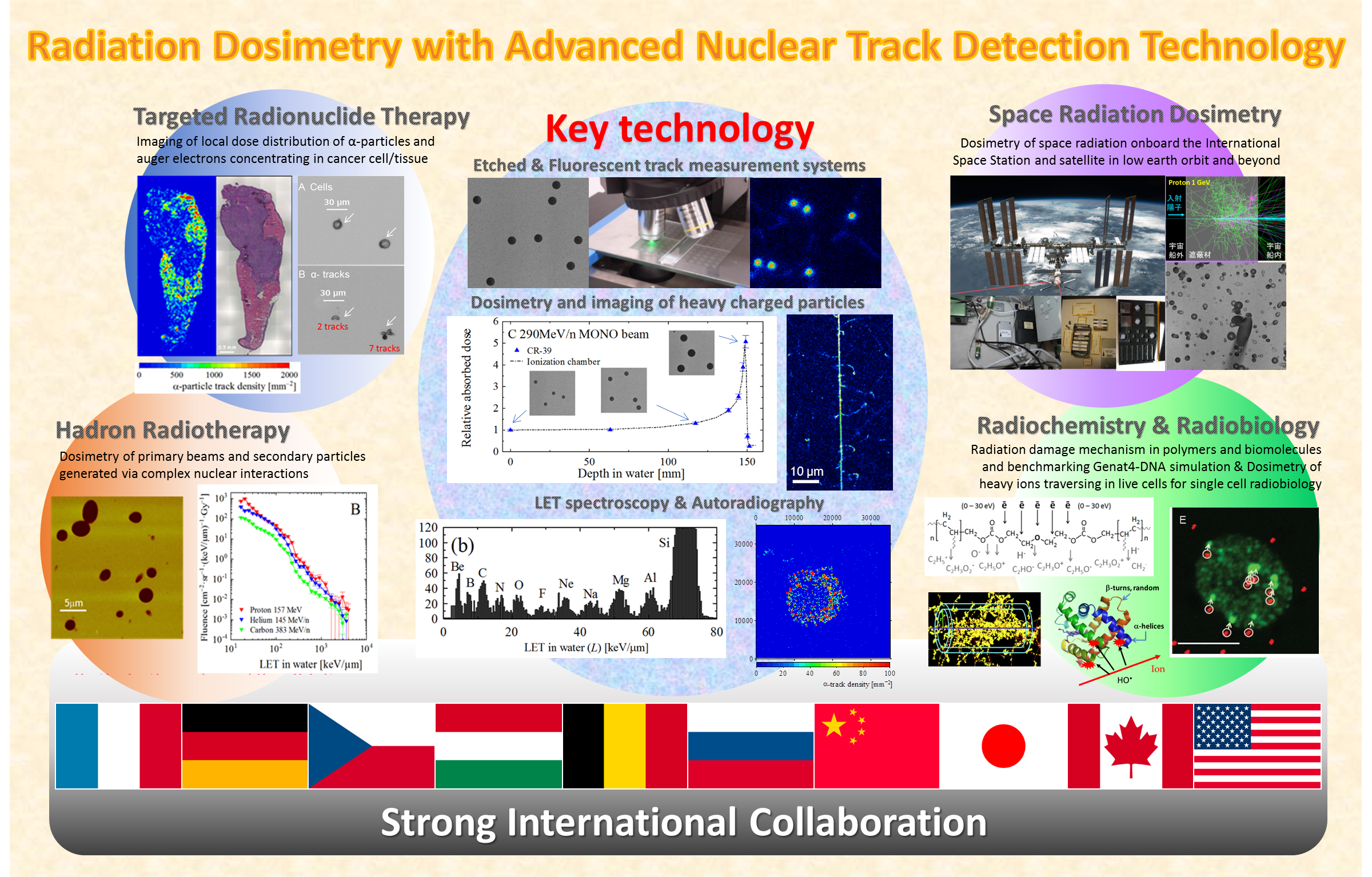
Application of X-ray fluorescence analysis to detection of actinides
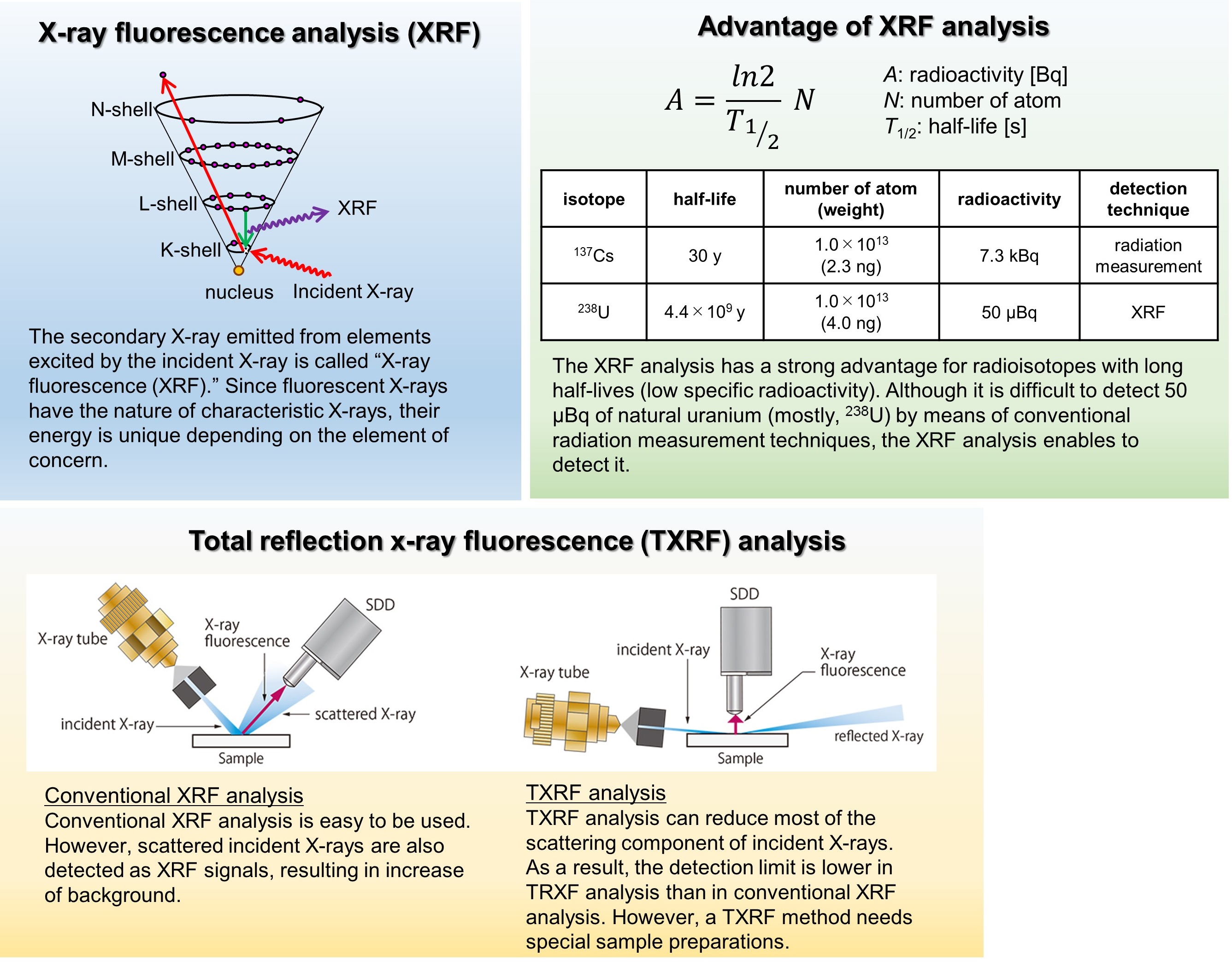
Application of X-ray fluorescence analysis to detection of actinides
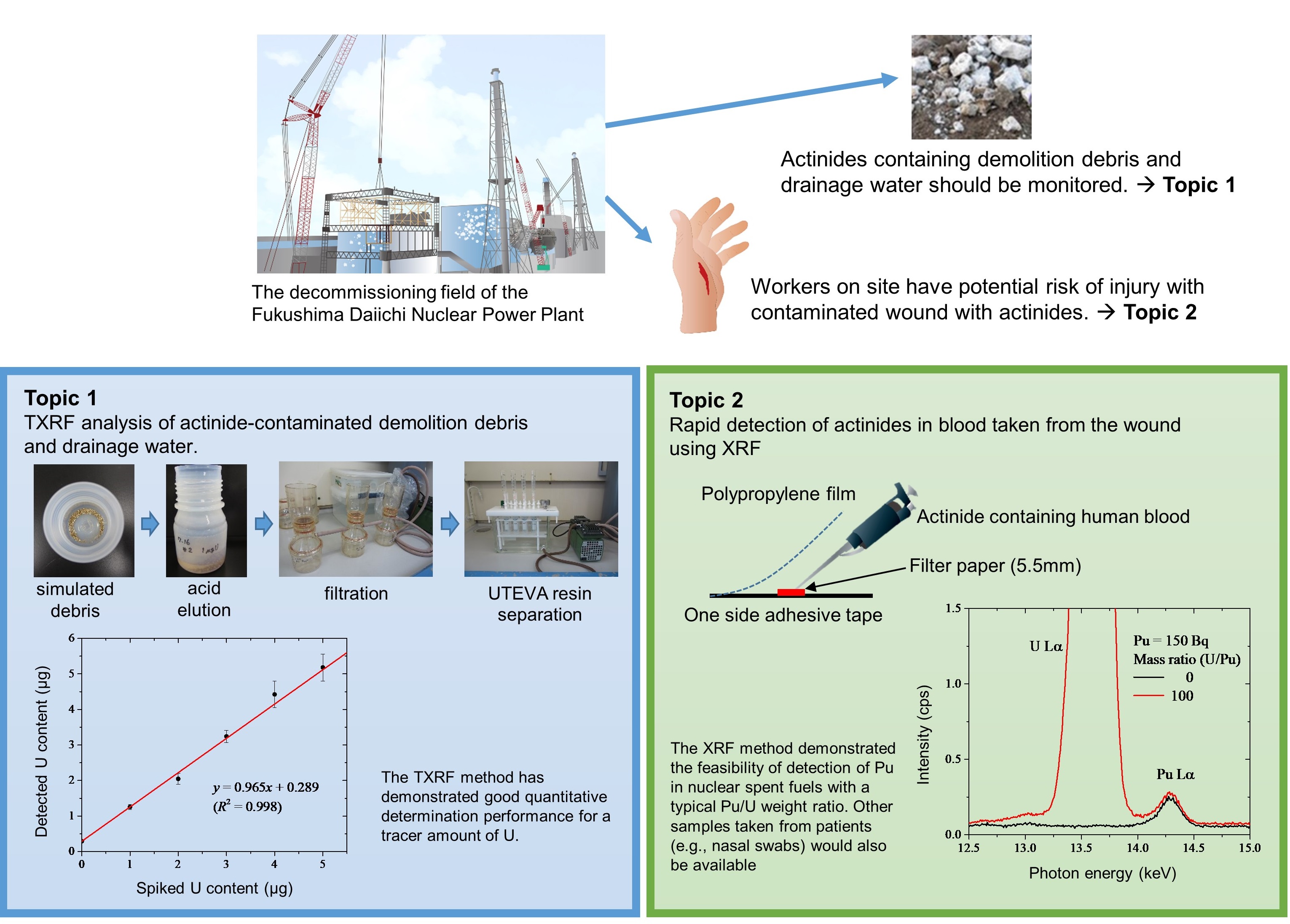
Radon study
Internal dosimetry (1)
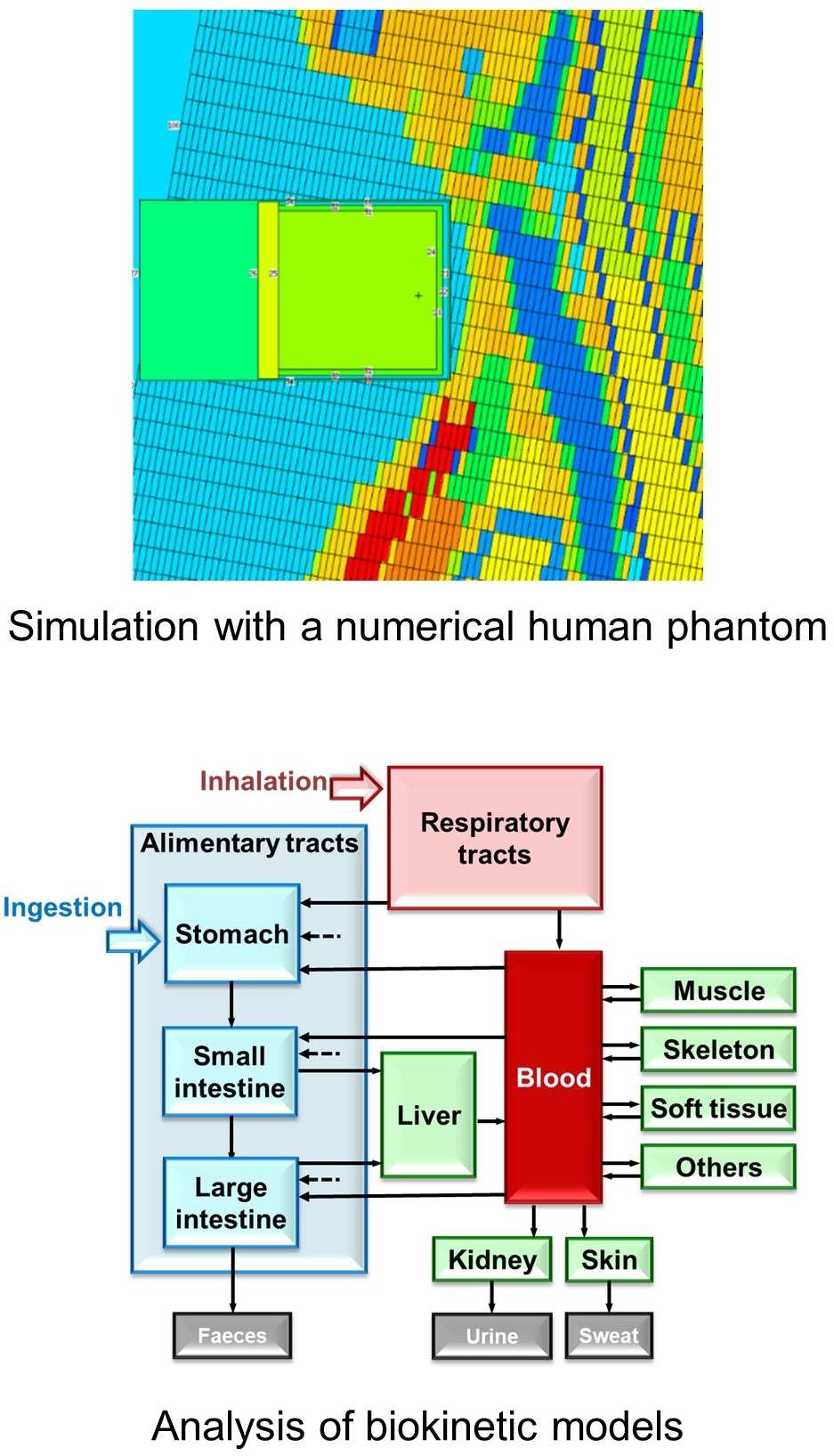
Internal exposure occurs due to radiation emitted by radionuclides incorporated into the human body via inhalation, ingestion, skin or wound. According to the kinds of radionuclides, in vivo measurements for the specific organ/tissue (e.g. whole body, lungs and thyroid) and/or bioassay for the collected sample (e.g. urine and faeces) should be carried out. From the results of the activity in the organ/tissue and/or the collected sample, the initial intake of the radionuclide is estimated considering its physical and chemical characteristics as well as biokinetics in the body.
The several studies related to the following topics are going on as part of research on internal dose assessment for an emergency situation:
- Radiation transport simulation of in vivo measurements with a numerical phantom constructed precisely as the reference human;
- Development of a rapid bioassay method; and
- Development and analysis of biokinetic models.
Internal dosimetry (2)
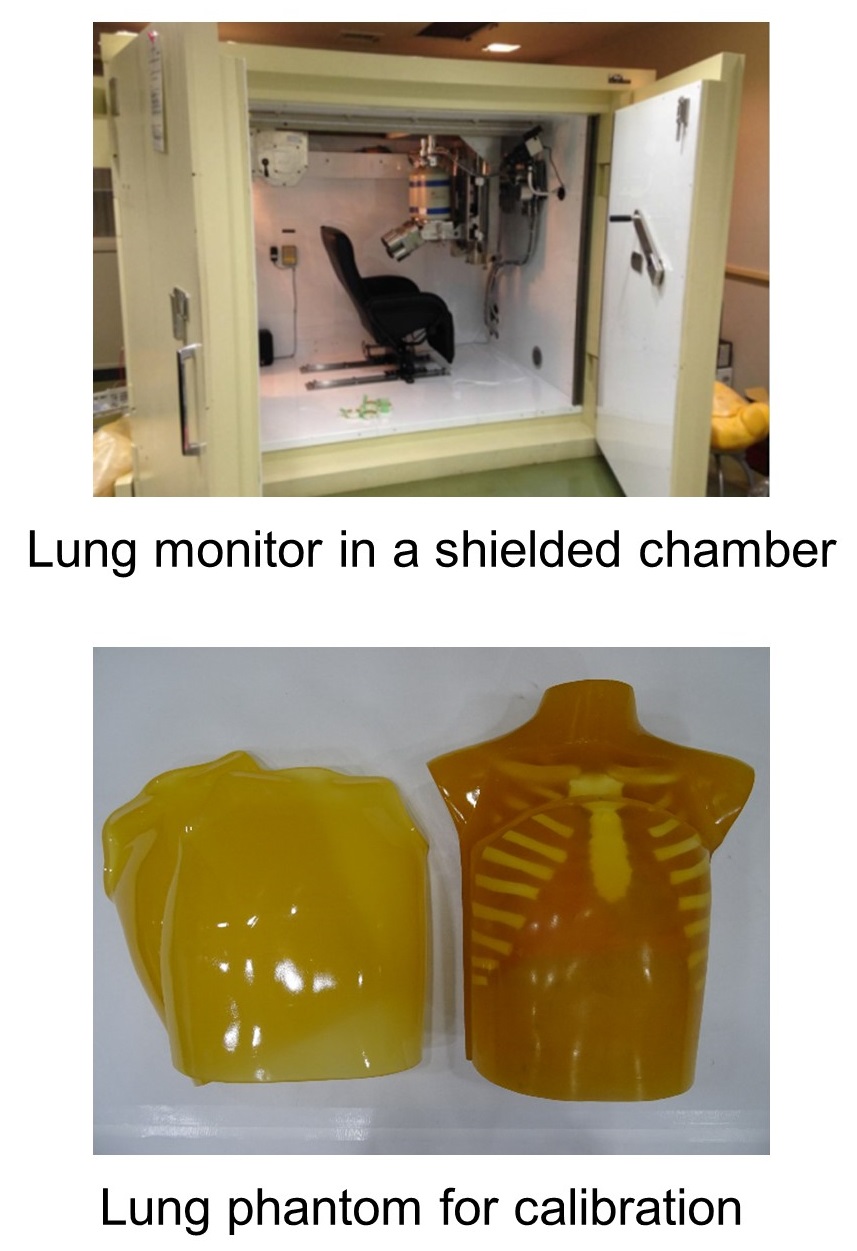
Radionuclides of actinoid series (e.g. Pu and Am) with alpha-particle emission could deliver high internal dose even with a tiny amount of intake. Therefore, once an accident occurred in a facility dealing with these radionuclides, the presence and extent of internal exposure should be assessed as rapidly as possible as being key information for medical decisions including an indication for decorporation therapy with Ca/Zn-DTPA to enhance urinary excretion of the radionuclides in the body.
A lung monitor which has germanium detectors for the low energy photons (~60 keV) emitted by Pu/Am depositing in the lungs after its intake via inhalation is installed in a thick iron shielding room to enhance the detection sensitivity by reducing the background level due to natural radiations from space and land. To determine the activity quantitatively, the detectors are periodically calibrated by measuring a lung phantom containing sealed radioactive standard sources.
The essential datasets on difference in calibration factors among physiques have been accumulated.
Internal dosimetry (3)
QST (formerly, NIRS) developed a tool to facilitate internal dose calculations, MONDAL (MONitoring to Dose cALculation support system). We have distributed MONDAL to many institutes at their requests.
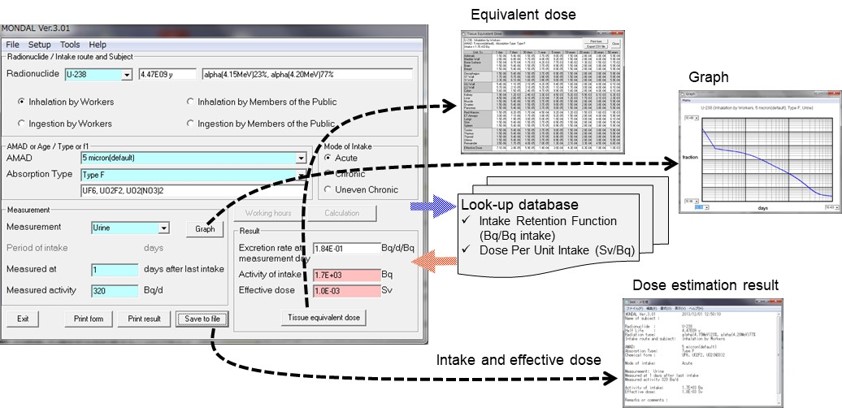
Internal dosimetry (4)
Bioassay method for estimating internal exposure:
Most of the actinides have relatively long physical and biological half-lives and are also alpha emitters that should be concerned in terms of internal exposure. Bioassay is a conventional method to estimate internal exposure associated with the actinides by means of radiochemical analysis of urinary and faecal samples taken from patients involved. We have been improved the bioassay methods and participated international intercomparison exercises on bioassay to maintain our techniques.
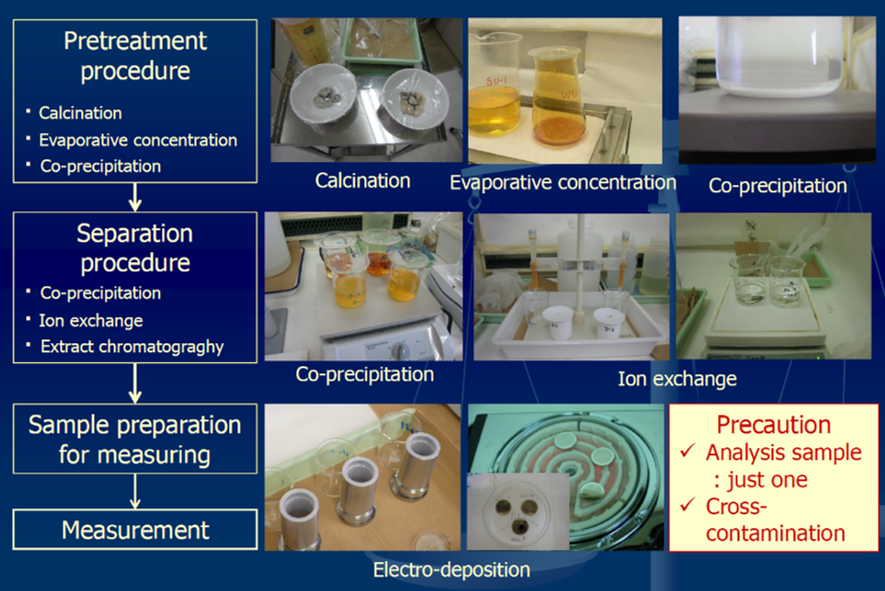
Bioassay procedure for actinides
Response to radiological accidents
Nasal swab method for precise dose assessment
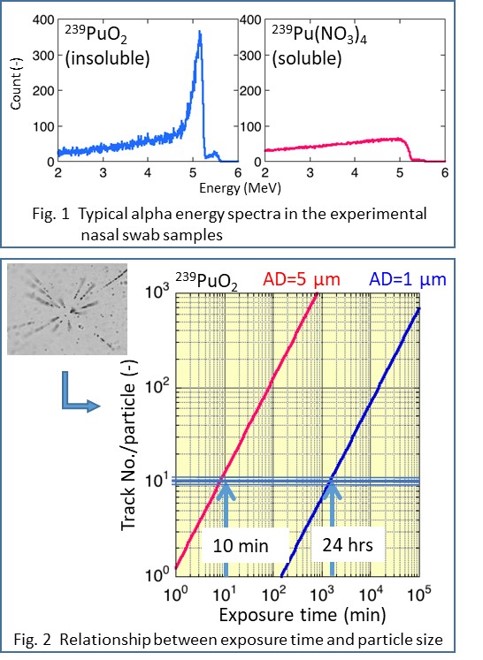 A nasal swab method has been used to identify or screen significant internal contamination via inhalation. This method is beneficial in particular to patients internally contaminated with actinides due to its rapidness and adequate sensitivity. For improving this method, we performed experimental studies to obtain the following important parameters for the internal dose estimation from nasal swab samples.
A nasal swab method has been used to identify or screen significant internal contamination via inhalation. This method is beneficial in particular to patients internally contaminated with actinides due to its rapidness and adequate sensitivity. For improving this method, we performed experimental studies to obtain the following important parameters for the internal dose estimation from nasal swab samples.
1) Physicochemical properties
Nasal swab samples are normally employed to gross alpha counting; however, we attempted alpha energy spectrometry to extract the information on the physiochemical properties of plutonium compounds on the samples. Fig. 1 shows a distinct difference in the shape of alpha spectrum between plutonium oxide (PuO2) and plutonium nitrate (Pu(NO3)4). suggesting a possibility to reduce one of the uncertainties in the internal dose estimation arising from the actual solubility of the inhaled compounds.
2) Deposition properties
A conventional auto radiography (ARG) method allows to provide a prediction for the aerosol size that is another important parameter in the internal dose estimation, especially in the case of inhalation of Pu compounds. Fig. 2 demonstrates the relationship between the exposure time of samples in the ARG and the number of produced tracks in proportion to radioactivity in the aerosol. The result indicates that it takes only 10 minutes to check whether the default size of 5 µm in AD (aerodynamic diameter) is appropriate or not, whereas it will take a longer time if smaller aerosols exist.
Response to nuclear accidents
Population monitoring for thyroid exposure from radioiodine
A system for the nuclear emergency response in Japan has been dramatically changed since the TEPCO’s Fukushima Daiichi Nuclear Power Plant (FDNPP) accident in 2011. The stipulations concerning nuclear emergency preparedness have also been revised based on experiences of the accident. One of the important missions in the response to a nuclear accident is to assess radiation exposure doses of the affected population. However, this is a very challenging task in Japan because of the world’s most densely populated country (~ 100 thousand people living within an Urgent Protective action planning Zone: UPZ), and in particular, considering the thyroid exposure due to intake of short-lived radioiodine. We are considering a reliable and robust monitoring method for large populations to assess their thyroid internal doses not only for medical triage purposes, but also for future epidemiological studies concerning low-dose radiation health effects (see the figure below).
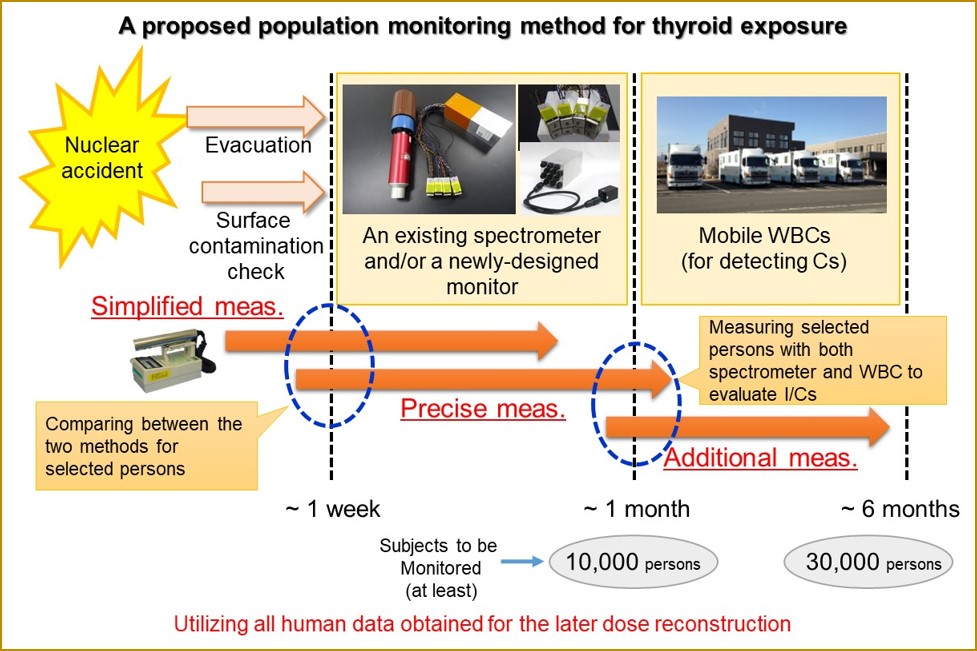
Fukushima-related
Reconstruction of the early internal dose to Fukushima residents
Enormous quantities of radionuclides were released into the environment following the disastrous accident at the Fukushima Daiichi Nuclear Power Plant (FDNPP) in March 2011. It is of great importance to determine the exposure doses received by the populations living in the radiologically affected areas; however, there has been significant difficulty in estimating the internal thyroid dose received through the intake of short-lived radionuclides (mainly, 131I), because of the lack of early measurements on people. An estimation by the National Institute of Radiological Sciences (NIRS) for 1 April 2012 to 31 March 2013 was thus performed using a combination of the following three sources: thyroid measurement data (131I) for 1080 children examined in the screening campaign, whole-body counter measurement data (134Cs, 137Cs) for 3000 adults, and atmospheric transport dispersion model simulations. This work has been continued to improve the dose estimation.
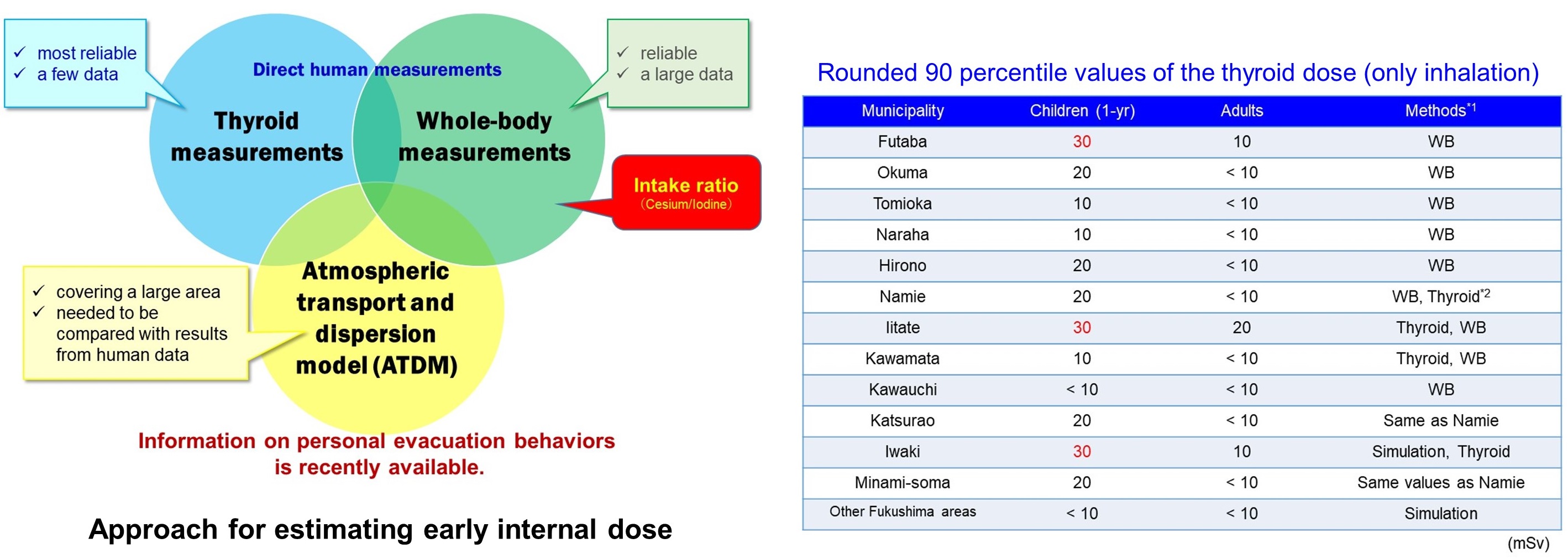
Characteristics of the response pf personal dosimeters in the living environment in Fukushima
To contribute to the reconstruction and revitalization of Fukushima Prefecture following the 2011 nuclear power disaster, annual individual doses were estimated for evacuees who will return home to several municipalities in Fukushima where evacuation orders were lifted. Ambient external dose rates and individual doses obtained with personal dosimeters were measured at many residential and occupational sites throughout the study areas to obtain fundamental data needed for the estimation. The measurement results indicated that the ratio of individual dose based on a personal dosimeter to the ambient external dose measurement was about 0.7.
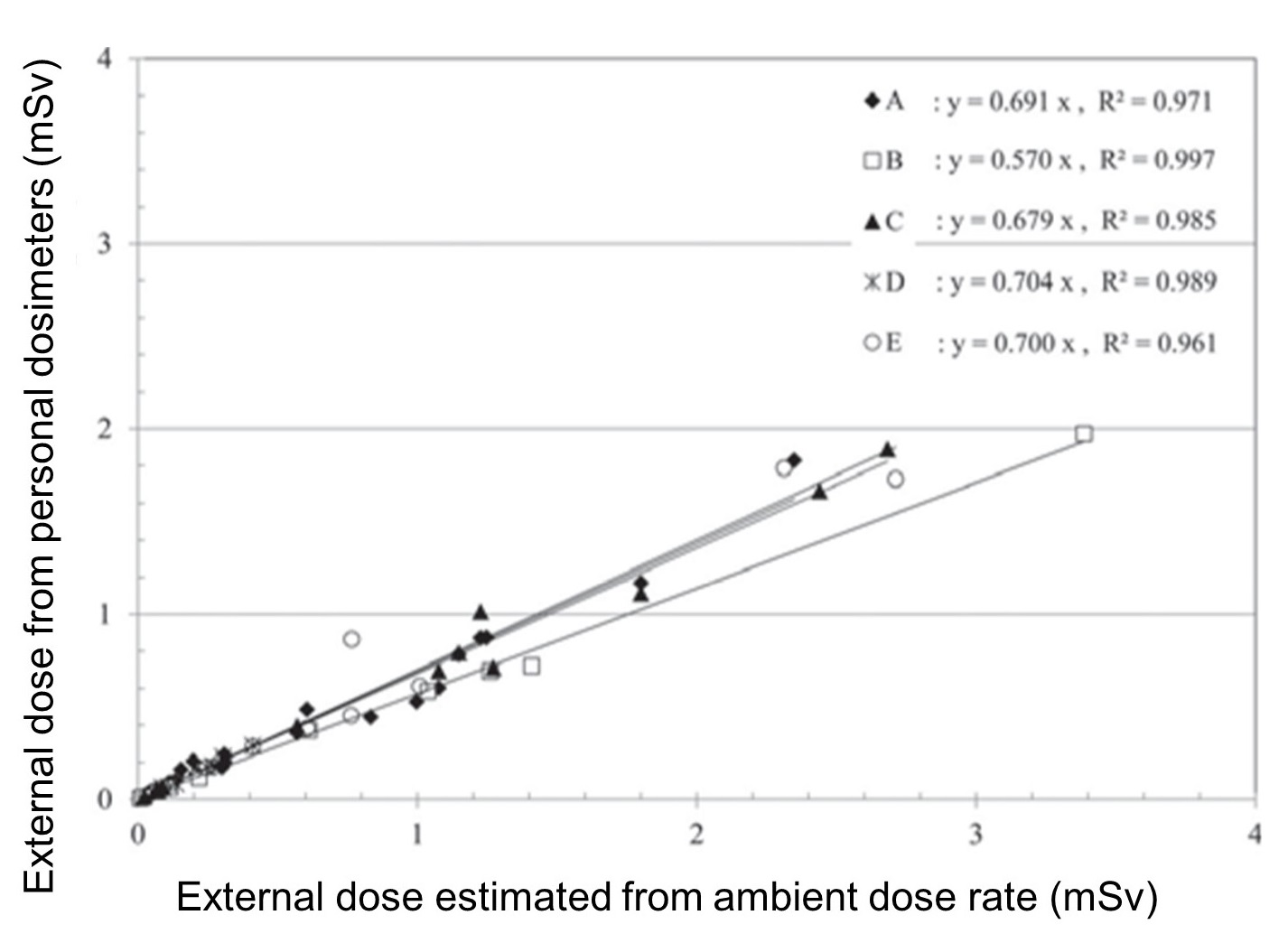
QST’s biodisimetry protocol
International collaboration
ARADOS
ARADOS (Asian Radiation Dosimetry Group) is a voluntary network on radiation dosimetry among Asian countries and have been active since 2015. A prospectus of ARADOS is to establish a platform for promoting the research and development and Asian cooperation in the field of the dosimetry of ionizing radiation.

